Meta Description: Radon is a cancer causing gas that is often found in drinking water. If you want to ensure the safety of your family and check for radon gas, follow this step-by-step guide to removing radon from your home water.
Radon is a harmful gas in water or the air in your home and has no odor, color, or taste, making it difficult to detect. This article will go over how to identify radon and safely eliminate it from your home.
According to the U.S. Environmental Protection Agency (EPA) and the Surgeon General’s office, radon exposure is the cause of more than 20,000 annual lung cancer deaths in the U.S.
Step 1: Identify the Source of Radon in Your Water
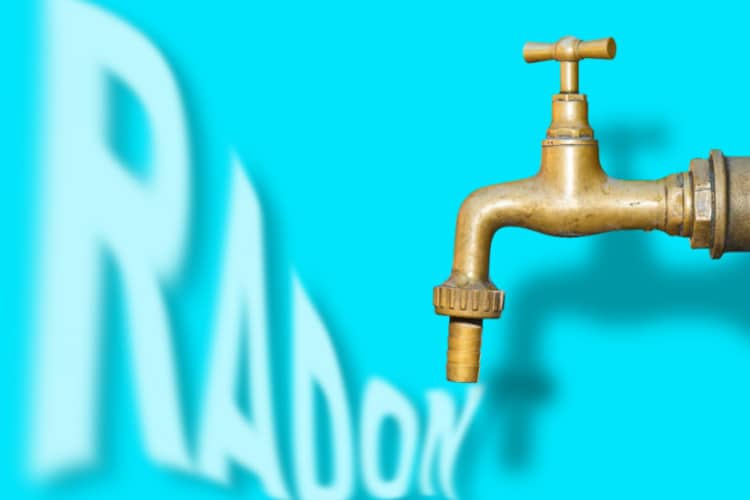
Radon is a gas that occurs after the radioactive breakdown of uranium found in the ground. This breakdown can occur in the soil beneath your home, releasing the radon gas into either the air or water that is brought into the house.
Uranium is a natural material found in soil and bedrock. The soil underneath or surrounding our homes most likely contains uranium, and as uranium decays, it releases radon gasses.
When radon is released it can accumulate in groundwater, which leads to our water sources such as underground wells. This water for the wells is used for cooking, bathing, or drinking, which exposes the homeowner to the harmful gas.
Step 2: Test Radon Levels in Water
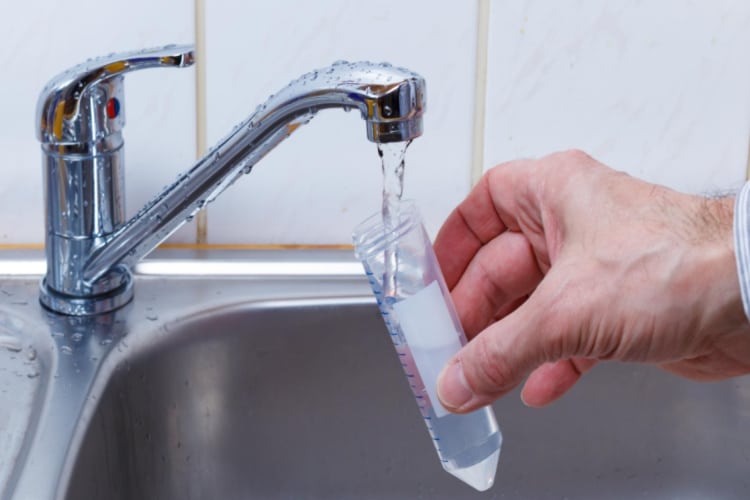
If you get your water from an underground source such as a private well, the Environmental Protection Agency (EPA) recommends testing your water for radon.
To request a test, you can reach the Safe Water Drinking Hotline at (1-800-426-4791) and they will direct you to your State laboratory office.
While EPA does not regulate private wells, they have proposed to regulate levels of radon in community water suppliers. This proposal would have community suppliers provide water with radon levels no higher than 4,000 pCi/L.
This regulation would be under the assumption that the state follows an indoor air program to reduce radon levels in indoor air. If there is no air program to regulate the radon levels in the air inside the home, then EPA is suggesting radon levels in drinking water be no higher than 300 pCi/L.
Checking the radon levels in your water is important and will keep you and your family safe from radon poisoning. Radon poisoning can lead to serious health complications such as lung cancer.
Early detection and proper mitigation techniques will help keep you safe from harmful gas.
Step 3: Choose Treatment Method To Remove Radon From Water
If you find high amounts of radon in your home drinking water, there are ways to improve the water quality. Removing radon from your water supply before it enters your home is the most effective treatment method for high concentrations of radon gasses.
Filtering the radon from the water before it enters your home is called point-of-entry treatment.
The two most popular point-of-entry devices used to reduce radon levels are granular activated carbon (GAC) filters and aeration devices.
Granular Activated Carbon Filters (GAC)
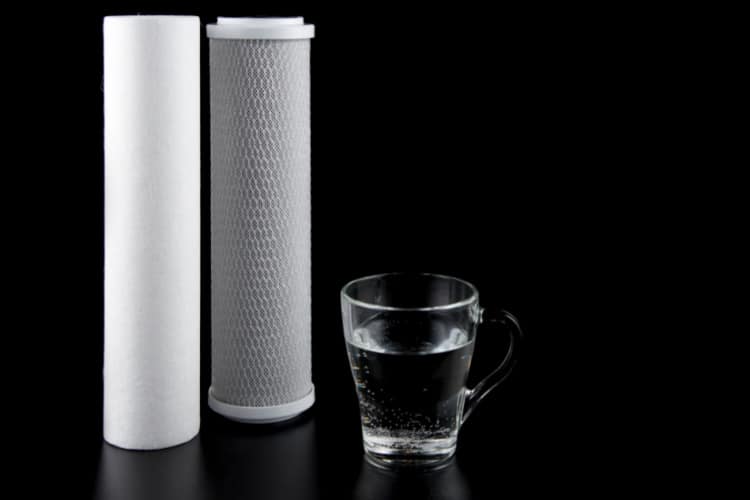
Granular activated carbon filters work by using activated carbon to remove the radon gas from the water source. There are a variety of GAC filters out there, although most follow the same concept for radon removal.
These devices consist of a fiberglass tank containing granular activated carbon, which traps and holds the radon gasses, removing them from the water source.
GAC filters are the cheaper point-of-entry option, but require specific disposal methods. The radioactivity from the radon gas can accumulate on the GAC filter, which may pose other hazards.
Research GAC filter removal or contact a local professional to learn more.
Aeration Units
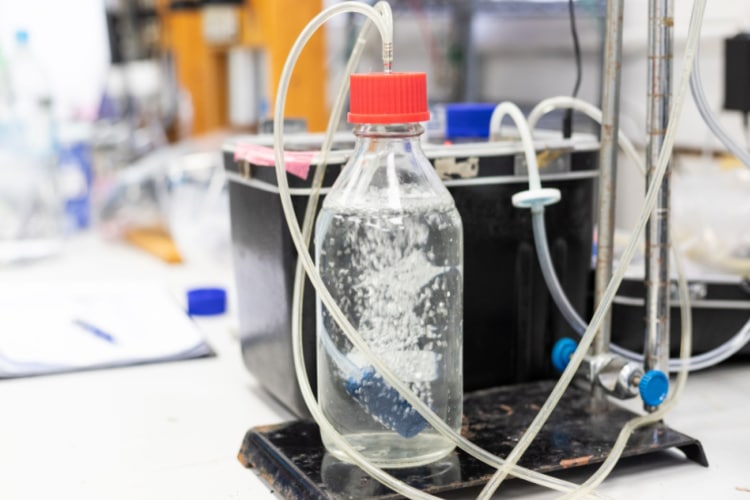
Aeration devices work by filtering bubbled air throughout the water. This bubbling helps break down the radon gasses, which are then carried out of the water and released through an external exhaust fan.
Current aeration units can have up to 99% removal efficiency. However, the aeration device may be less effective if your water is contaminated with high quantities of iron, manganese, or other water concerns.
Aeration devices are considered the best technology for removing radon from water. This is due to their effectiveness, and because there is no radioactive buildup like there is with a granular activated carbon filter.
Removing the radon from the water before it enters your home also reduces the amount of radon in the indoor air in your home. This is because the majority of the radon in indoor air comes from water sources such as sinks and showers.
Having a lower concentration of radon in your drinking water and air lowers the likelihood of developing radon-related health complications.
Step 4: After Treatment, Check if the Water Is Finally Free From Radon
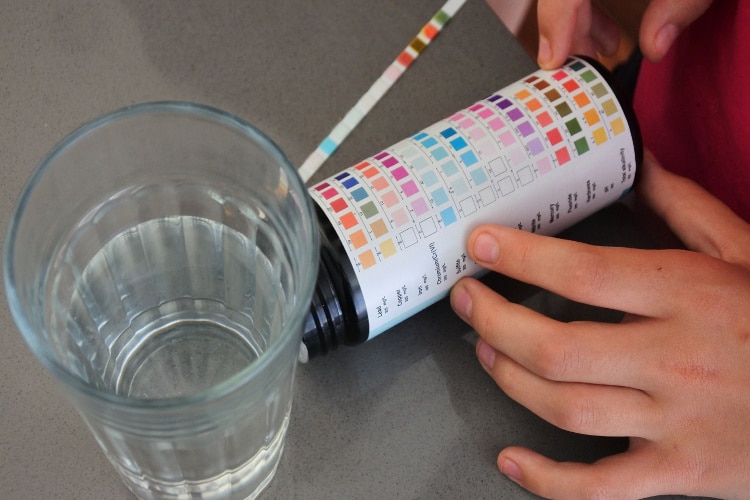
Because radon is odorless, tasteless, and colorless, it may be hard to tell if your mitigation efforts are successful. Some states, such as New York, may offer free radon test kits.
They may also be able to direct you to a certified radon mitigation contractor who may be able to provide more support.
Remember to change the filters in the granular activated carbon unit to prevent radioactive buildup. It is recommended to hire a radon mitigation contractor to review your system every few years to ensure it is working efficiently.
Frequently Asked Questions
Below are some frequently asked questions regarding radon elimination and management. The important thing to remember is to stay proactive.
How does radon get in the water?
Most radon escapes the water when the water is used for things such as cooking or showering.
This radon gas is released into the air, where it poses the same threat of increased risk of cancer. Some radon remains in the water and can be harmful if consumed in large quantities over time.
Radon is a naturally occurring gas released when uranium is decaying underground. This gas then accumulates in groundwater, which is often used for wells that bring water into our homes.
What are the most common signs of radon in water?
Unfortunately, there are no definitive signs of radon exposure in water. The gas is nearly undetectable, which is part of what makes it so dangerous.
Prolonged radon exposure can cause other detectable health issues over time. Radon poisoning and the early signs of lung cancer symptoms include:
- Wheezing
- Coughing up blood
- Frequent pneumonia or bronchitis
- Loss of appetite
- Fatigue and
- Weight loss
What are the health effects of drinking radon-contaminated water?
Radon exposure is the second leading cause of lung cancer, following smoking. Unfortunately, radon-related health problems can take years of exposure before symptoms occur.
Other health effects caused by radon contaminated water include:
- Persistent cough
- Trouble breathing
- Chest tightness or pain
- Difficulty swallowing
- Frequent sore throat
The likelihood of developing lung cancer is higher if you have a history of smoking. If your home test shows a concerning amount of radon or if you have ever been a smoker, you may qualify for a lung cancer screening.
Early detection increases the potential to treat lung cancer-related illnesses.
Radon poisoning builds up slowly, and symptoms do not appear until precancer or cancer has already formed in the lungs. Contact your doctor right away if you suspect you might have radon poisoning.
To avoid any of these problems occurring, run a test for radon poisoning as a precaution.
What are the acceptable levels of radon in water?
The highest level of radon the EPA allows is 4,000 pCi/L if the state enforces indoor air programs. The EPA has proposed to regulate the standard amount of radon in community water suppliers.
If there are no multimedia mitigation programs for the household air, the highest recommended amount of radon in water changes to 300 pCi/l. This change is because the majority of the radon in household water will be released into the air, where it still poses health risks.
Having EPA-approved indoor air programs helps protect against radon exposure in the air.
When talking about pCi/L, this acronym stands for “picocuries” per liter of air. This measures the radioactive decay of radon.
How much does it cost to remove radon from water?
A granular activated carbon filter typically costs around $1,500 and may come with installation fees. These filters may need to be replaced often, as debris and radioactivity can accumulate on the filter over time.
An aeration system is more expensive, usually around $5,000. The initial cost is more expensive than a GAC filter but may cost less over time as it requires less maintenance. Aeration systems are also more effective in removing higher concentrations of radon from the water.
When selecting a contractor to help remove the radon from your home, it is recommended to get multiple estimates to find the best option for you. In some states such as New York, the department of health does not regulate radon services.
Get to know your contractor, their credentials, and previous work if possible.
What is the cheapest way to remove radon from water?
When using a contractor, the cheapest option available is the granular activated filter system which is priced at around $1,500. Note the cost of removing radon from water can vary depending on which state you live in and the contractors available.
It is possible to save money on the cost of removing radon from your water. Installing GAC filters can be done at home if you have the right materials and expertise.
The cost of materials to install a GAC filter is usually $500, saving you $1,000 on installation charges. It is highly recommended to do your research before attempting to install a radon mitigation system, because inaccurate installation may result in increased radon levels in your home.
Previous experience with electrical, plumbing, and carpentry skills is suggested for installing a DIY GAC filter.
Does reverse osmosis remove radon?
Reverse osmosis does not remove radon from water.
Reverse osmosis, according to EPA, is a pressure-driven membrane separation process. Reverse osmosis works by filtering the water through a membrane that has small openings, preventing any molecules or items larger than the membrane from passing.
This process works for concerns such as uranium, radium, and other larger particles. The membrane does not remove any gaseous contaminants in the water because the gas molecules are smaller than the pores in the membrane.
Radon can pass through the membrane, making reverse osmosis ineffective at removing the toxic gas from the water.